Cracker of an excuse: NHAI ignored flood of plaints, protests against NH 66 work, now blames rain for collapse
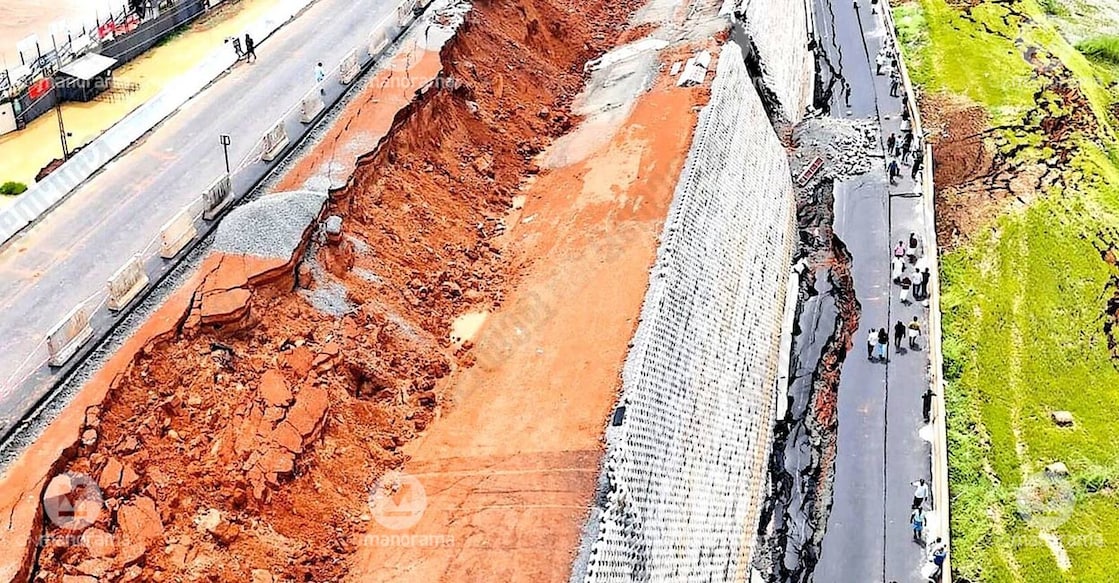
Mail This Article
The collapse of a section of the under-construction six-lane National Highway 66 at Kooriyad, Malappuram, has vindicated the stand of residents in the area who had raised serious ecological concerns right from the beginning of the work. Visuals emerged after the shocking collapse, showing cracks all over the road and across the paddy field.
Three cars were driving along the road when the road caved, triggering panic. Kavungal Liyakath Ali, former president of AR Nagar grama panchayat, who was travelling in the third vehicle, said, “There were two cars ahead of us, both carrying women and children. Suddenly, the NH wall collapsed onto the approach road, which gave way. My brother hit the brakes, and we rushed out. A child from the first car was bleeding.”
The incident has intensified scrutiny of the construction methods used by KNR Constructions Ltd (KNRC), which bagged the tender. A significant portion of the highway in this region was constructed by elevating the terrain using gabion walls, interlocking cement bricks on the outer layer, and filling the inside with soil. Residents allege that KNRC ignored repeated complaints regarding the construction methodology, which they described as unscientific and unsuited to the local geography.
The highway in this region was built by raising the ground level and levelling the paddy field, an area known for heavy waterlogging. Residents had demanded that the road be constructed on supporting pillars instead, warning that the soft terrain would not withstand the load. The worst fears came true as the road collapsed along with a portion of the embankment.
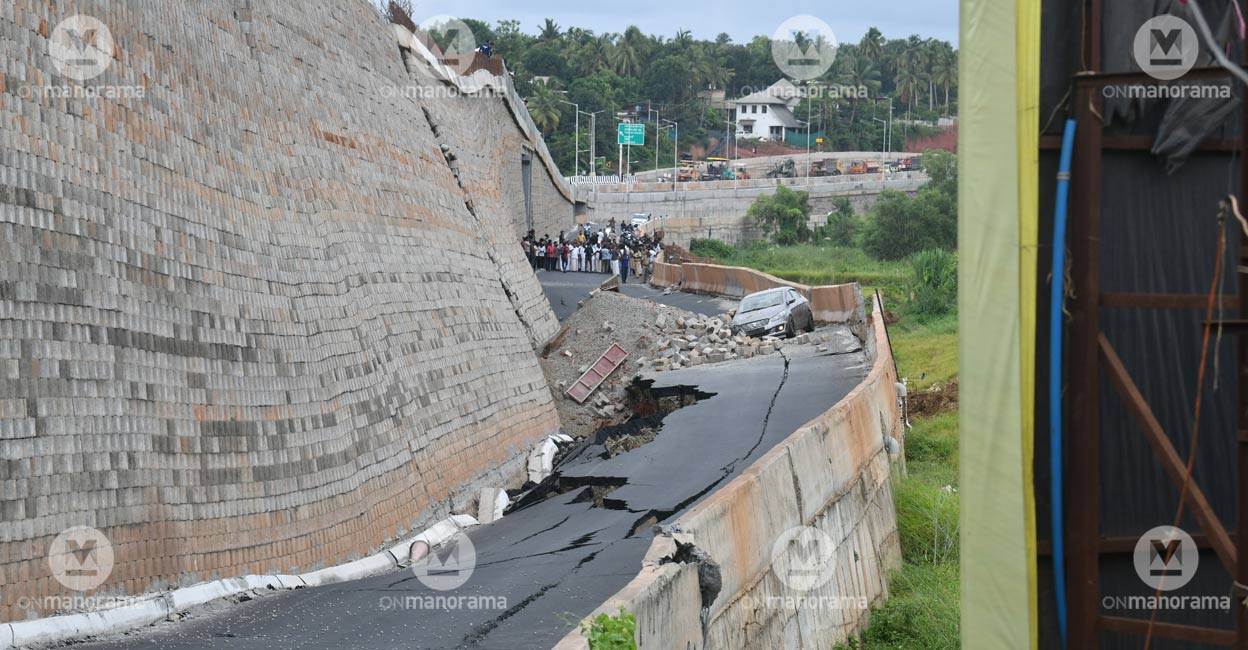
"The panchayat itself approached the construction company and National Highway Authority of India (NHAI) officials with the public’s concerns. However, they were dismissive, pointing to their experience with similar projects. When cracks appeared near an underpass, we raised the alarm again, but no action was taken. Anyone familiar with this area would know that an elevated pillar structure was essential here," said M Arifa, the local ward member.
She further alleged that the construction company had obstructed a natural stream flowing through the area during the highway works, contributing to drainage issues.
KNRC’s liaison officer, Ashraf, defended the construction, saying it was done as per pre-approved design specifications. “This is a wetland area with underground water flow. However, the design does not allow for pillar-based support. After the technical inspection, we will take steps to strengthen the affected section. The approach road was raised above the paddy field by 1.5 metres, with the highway itself rising an additional 7 metres above that," he added.
A technical expert who had overseen the construction of NH projects in Kerala said that cracks on the road and the paddy field indicated heavy unsettlement of the earth. "From the preliminary assessment, such a collapse and formation of cracks happen when there is a displacement of earth beneath the ground under a heavy impact. Another reason could be water percolation. But the design, alignment, and choice of structure are selected after detailed soil evaluation studies, which are done by an accredited technical agency," he said.
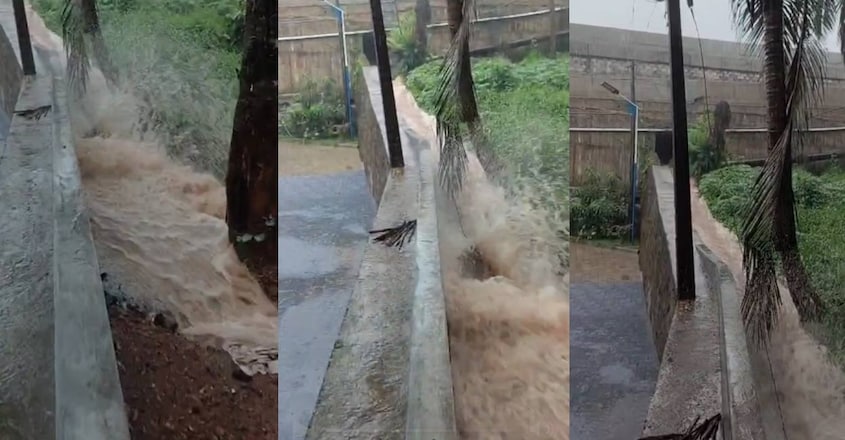
NHAI officials who attended a review meeting of the District Collector blamed heavy showers for the collapse. People find the argument silly.
They said that their long-standing concerns about the district’s fragile geography and hydrology were ignored. Vengara panchayat president Haseena Fasal said the panchayat had submitted multiple complaints to NHAI and the project director, pointing out that soil from the construction was dumped into nearby streams, disrupting natural water flow and leading to waterlogging in surrounding areas.
“Just a week ago, locals pooled money and spent around ₹60,000 to clear a large amount of soil from the stream’s banks using an earthmover. It took nearly five days,” said resident Anvarudheen. “We had approached the District Collector and disaster management authority earlier, but when no action was taken, we did it ourselves,” he added.
According to panchayat records, at least 350 acres of paddy cultivation in Vengara have been affected by persistent flooding due to the highway construction. In Kolappuram, new drainage channels were constructed without dismantling older systems, leading to a build-up of waste and overflow of drainage water into nearby homes.
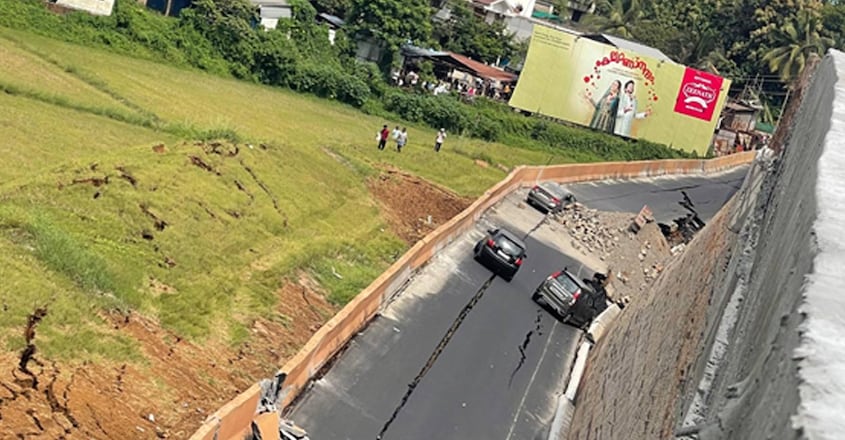
Tirurangadi MLA K P A Majeed reiterated that repeated warnings from locals and representatives were ignored. “The people of Malappuram have consistently opposed this kind of development that divides the region and damages its ecology,” he said.
The construction of the current stretch began in early 2022. In April 2025, cracked cement bricks were noticed in certain portions, prompting KNRC workers to patch them up with fresh cement after media attention. Heavy monsoon rains in July and August 2024 caused further waterlogging in service roads across three wards in the Vengara panchayat. The Indian Union Muslim League (IUML) submitted a plea to Malappuram MP E T Muhammad Basheer, highlighting flood-like conditions and water entering nearby homes.
Residents say that the new service roads are 2.5 metres lower than the old highway due to faulty elevation, worsening water retention. They demand that the road near the collapsed Kooriyad section be raised by at least 2.5 metres to prevent future flooding. They also cite an alarming trend— despite the water level dropping in the Kadalundi River, adjacent paddy fields remain flooded, indicating disrupted underground water flow. Locals allege that natural streams were either filled or narrowed, choking water flow into the river.
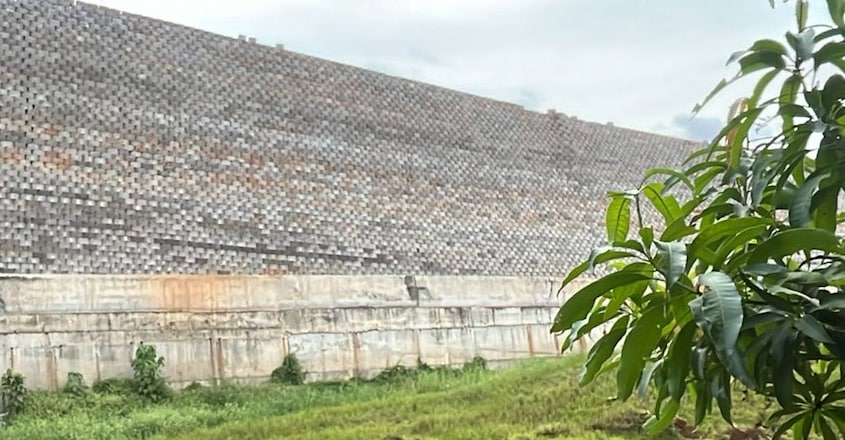
Residents now demand the construction of two-metre-wide drainage systems on both sides of the highway, connected to main streams, and underpasses below major bridges to link service roads safely.
In a separate development, a petition filed by AR Nagar native Nasar Malayil with the Kerala High Court challenged the construction of a bridge near Kooriyad, stating it violated Indian Road Congress norms. According to Advocate Thanveer, who represented the petitioner, the bridge was built 200–250 metres away from the required intersection point, revealing fundamental alignment flaws. “The recent collapse happened between the Kooriyad underpass and the Kolappuram overpass. We had warned about misalignment here from the beginning,” he said.
Meanwhile, a minor landslip happened on the under-construction NH-66 at Kuppam in Taliparamba on Wednesday, at the very site where residents have been protesting against repeated rain-triggered slips. Heavy rainfall caused water and soil to flow into nearby homes, prompting the panchayat to relocate several affected families. Pariyaram Panchayat President Sheeba T said the district collector has been alerted and that the RDO, along with NHAI’s project director, will visit the site to initiate necessary measures.

